Serbian spruce "Karel": description, planting and care
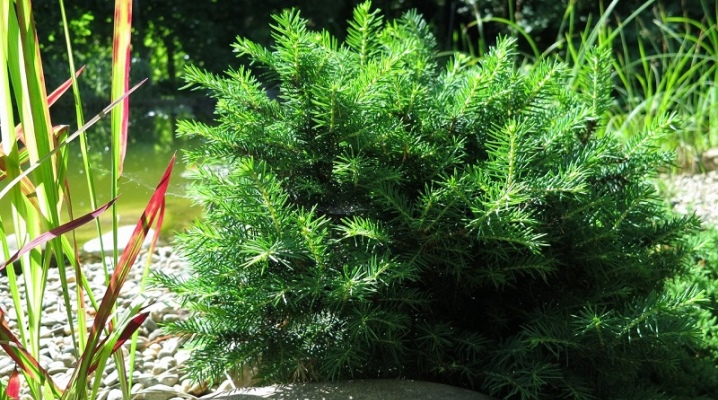
Evergreen trees are beautiful at any time of the year, and in winter they can revive the dull and monotonous landscape of the site. Many people choose Serbian spruce - this is due to its spectacular appearance and unpretentiousness. It is worth learning as much as possible about her in order to properly care for this plant.
Peculiarities
Serbian spruce "Karel" is a dwarf coniferous tree bred by Karel Buntinks at the end of the last century on the basis of the Belgian plant "Witch's Broom". The scientific name for spruce is Picea omorika, “omorika” means “spruce” in Serbian.
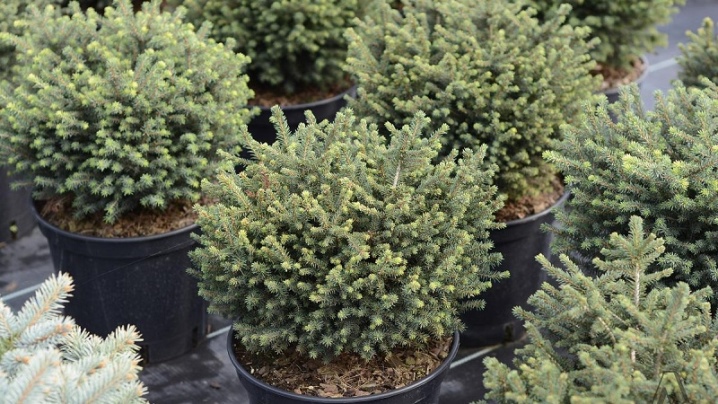
Description
- This is a compact Christmas tree with small height (up to 80 cm), with a dense voluminous crown, with a diameter of more than 1 meter... This is what an adult tree looks like, in contrast to young plants, in which branches stick out in different directions. As they grow, they grow overgrown with shoots, and the green mass becomes thick and dense. As a result, the above-ground part begins to resemble a lush hemisphere.
- Spruce grows slowly - only 3-4 cm in height per season, while adding more than 5 cm in width. It is not customary to prune the plant before the age of 10, as well as to remove a noticeable "nest" at the top - it gives the spruce an unusual look.
- Young twigs are green in color, but as they grow older, their color changes and transforms into silver.
- The length of the needles can be up to 1.5 cm, they have two white lines on the back. A pleasant feature is that the Christmas tree almost does not prick, since the edge of the needles is rounded.
- When the tree reaches 15 years of age, many small cones form on its branchesthis happens after flowering, usually in May.
- Since this variety is young, and its characteristics are not fully understood, it is difficult to say how long the spruce will live. It is believed that with proper care, it can reach the age of 50-60 years.
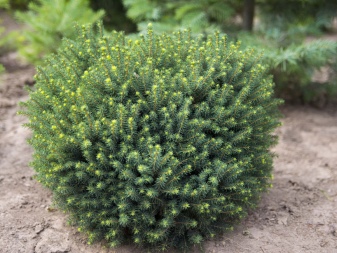
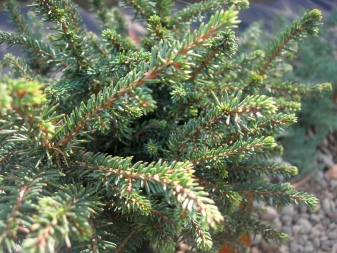
The reasons why many people prefer Serbian omorica to other evergreen species lie in its merits:
- the tree is quite resistant to diseases and attack of insect pests;
- calmly tolerates pruning, but in principle this is not necessary;
- Karel is not afraid of strong winds and cold, freely withstands frosts below 40 degrees and high moisture content;
- the tree is not afraid of the shade, it tolerates any climatic conditions well, does not affect its growth and the ecology is not very favorable - there is a thick layer of wax on its needles.
In addition, this is a beautiful ornamental plant with a silvery-blue tint of the branches, and due to its compact dimensions, it is suitable for both a spacious and a small area.
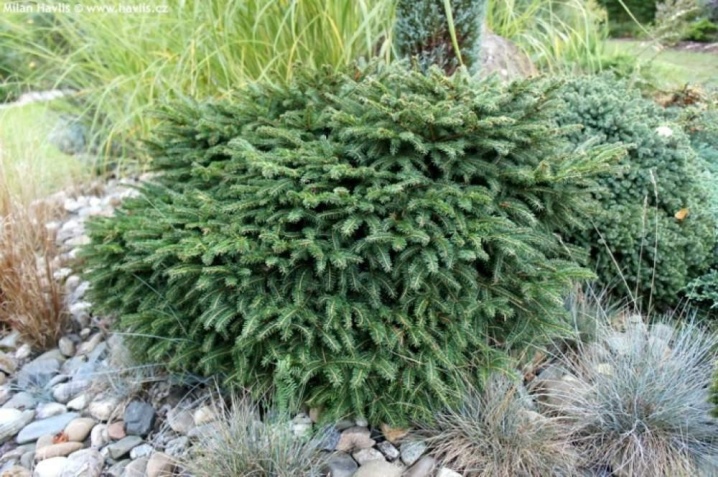
How to plant?
The tree is quite unassuming, however, it must be looked after correctly and not left unattended. An important point is the planting, on which the growth of a young Christmas tree depends. The optimal time for this is the last decade of April or early September. It is necessary to plant omorika in partial shade - although the plant is resistant to drought, it may not withstand prolonged heat. Therefore, the landing site may be sunny, but it is good if there is a source nearby that creates a little shade.
The soil that suits the plant may be slightly acidified, but it also grows on alkaline and poorly fertile soils. The main condition is that the earth is not excessively dry and compacted. Constant moisture is also undesirable, therefore, you should not plant spruce in lowlands, suggesting constant high humidity or swampiness. The way out is to double the thickness of the drainage layer, however, sometimes the tree is simply planted higher by building an embankment for this.
Young Christmas trees should be planted in the shade; the age of the tree can be 3-5 years. It is better to buy such plants in nurseries. If the spruce is delivered from abroad, it must be packed in a container, but the roots can also be covered with burlap.
The root system should not be allowed to be open, it is also worth paying attention to the dark ends of the needles - this is an indicator of the disease.
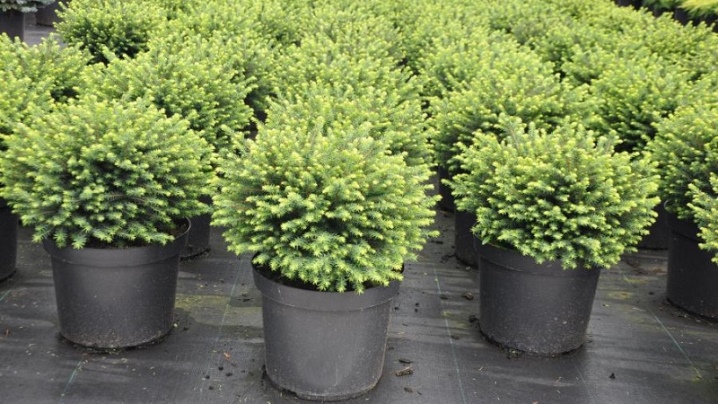
The order of preparatory actions.
- Peat must be added to alkaline or neutral soil... If the soil is too dense, it is diluted with sand, garden soil. Clay is added to the soil with an excess of sand.
- Next, you should add top dressing - "Kornevin" (for 10 liters - 10 g), or about 100 g of nitroammophoska.
- The place is prepared 2 weeks before landing, moreover, the depth of the ditch should be equal to the height of the earthen coma, and the width should exceed its diameter by at least 1.5 times.
- With clay, heavy soil, drainage is necessary... To do this, use crushed stone or crushed brick. In this case, the depth of the pit should be 100 cm, while 20 cm will go to the drainage layer. Sand is placed on top of it.
- With sandy and sandy loam soil, drainage is not required, and the depth is 80 cm. A deeper planting is not needed, since the roots of the Serbian spruce are superficial.
- 2/3 of the prepared soil is poured into the prepared hole, after which water is poured into it.
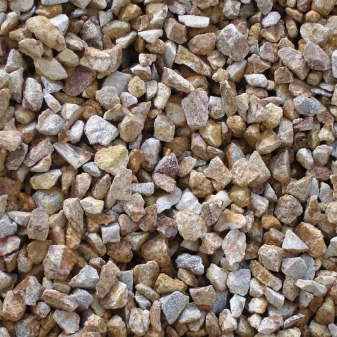
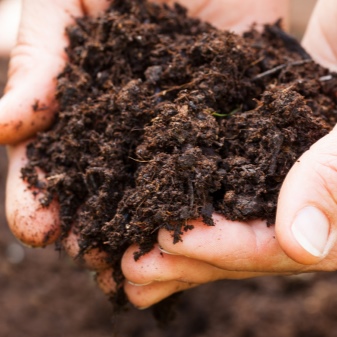
Planting begins after 14 days:
- part of the earth is taken out of the pit with a shovel;
- the Christmas tree, together with an earthen lump in burlap, is lowered into the ground so that the root collar is at the level of the border of the planting pit or slightly above it;
- the substrate poured into the hole is lightly tamped, and then an earthen roller is made and the spruce is watered (up to 20 liters of water per tree);
- after waiting until the moisture is absorbed, the trunk circle is mulched with pieces of pine bark or high (sour) peat.
If several trees are planted at once, then a distance of 2-3 m must be observed between them. Plants of any age should be planted or transplanted only with an earthen clod, in this case, one can hope that the spruce will take root. During planting, it is important to avoid voids, so the soil must be poured evenly from all sides.
Some gardeners advise planting Karel for the winter, but this can only be done with a slight frost, the planting hole is dug in advance, and when planting, they must insulate the near-trunk part with snow.
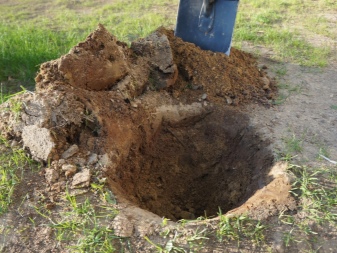
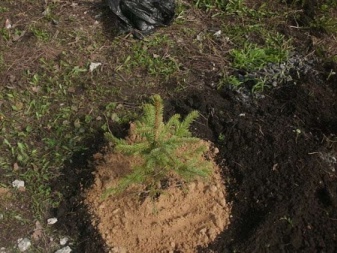
How to care?
One of the important points after planting in the spring and summer is caring for the Serbian omorika. Within a week, it is required to water the spruce with a growth stimulator solution. In addition, do not forget to process the twigs: they are abundantly sprayed with "Zircon" (for 10 liters - 1 ml), or "Epin" (for 5 liters - 1 ampoule). In April, this helps protect the tree from the harmful effects of ultraviolet radiation.
To prevent the green mass from drying out, it is recommended to shade the tree with a fine-mesh construction mesh for the first 12 months, and from mid-March to remove snow from the trunk so that the soil lump thaws, and the roots can fully receive water and nourish the plant.
Primary requirements.
- Watering - its frequency depends on the total amount of precipitation. If there is no rain for a long time, watering is required once every 7 days, 10–20 liters under each tree. As a rule, this scheme is watered in the spring; in the summer, 2 waterings per week are required.
- It is necessary to regularly loosen the soil by 5-6 cm, preventing it from sealing. Loosening is stopped 2 years after planting, so as not to injure the root system.
- You can feed it 1-2 times a year with special fertilizers for conifers: in the spring with a high level of nitrogen, in the fall - with potassium and phosphorus.You cannot fertilize the Serbian spruce with manure, humus and urea.
- Only young Christmas trees mulch. The layer thickness is about 5 cm, mainly sawdust, bark and peat are taken. These materials also serve as fertilizers. It is also recommended to sprinkle peat on the near-trunk circle for the winter, and not to remove it in spring, but to mix it with the soil. Young trees are additionally wrapped with white non-woven material.
Mulching is extremely beneficial for Serbian spruce. This prevents the growth of weeds, helps maintain soil moisture, and protects the tree from harmful insects found in the ground. Also, the benefit of this procedure is to maintain the microclimate in the root space.
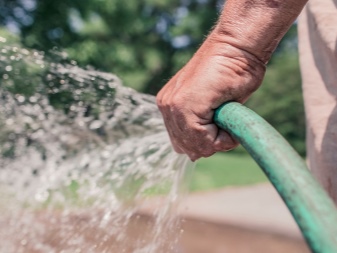

Reproduction methods
Due to the fact that spruce forms cones only in an adult state, it is most convenient to propagate a coniferous plant using cuttings... They do this in the spring, because in the summer it is difficult for them to take root.
To do this, you need to do the following.
- Tear off young shoots with a piece of bark (heel).
- Remove the needles at the bottom.
- Hold the twigs in the stimulant solution.
- Plant in perlite - this volcanic material protects young roots from excessive overheating and cooling. However, coarse sand can also be used.
A mixture of sand and peat can become a substrate for sprouts. After that, the seedlings are constantly watered, for their growth they need cool air and diffused light. It is important to ensure that the roots receive enough water, but it does not stagnate in the container. Later, the grown Christmas trees are transplanted into pots with a good drainage layer. Experts believe that it is better to plant a spruce in open soil after 4 years, when the plant gets stronger and its roots are fully formed.
Karel can be propagated by grafting or growing from seed, but these are more complicated methods. In addition, the seeds have to be hardened for at least 2 months at low temperatures, and not all of them can sprout. In general, inexperienced gardeners need to prepare for the fact that some of the seedlings, one way or another, will die.
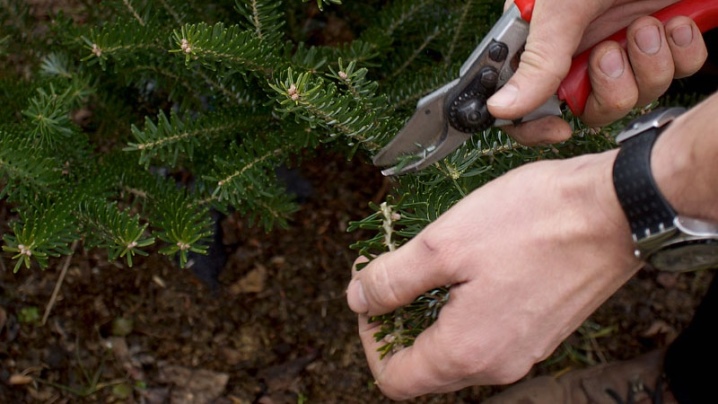
Diseases and pests
The main pests of ornamental spruce are spider mites and aphids. But there are other parasites that can lead to the death of a plant:
- hermes;
- mealybug;
- leaflet;
- spruce sawfly (caterpillars).
To protect the spruce from aphids, the tree is periodically sprayed with an infusion of onion husks, three times in a row at intervals of 5 days. You can use green (potash) soap for this. An effective remedy for spider mites is a garlic oil solution with the addition of liquid soap, or a fungicide such as colloidal sulfur.
Miniature spruce is also susceptible to some diseases - fusarium, rot, rust, bark necrosis and wound cancer. These dangerous diseases need to be quickly recognized and treated using special antifungal drugs. For this, the trunk, crown and soil of the trunk circle are processed.
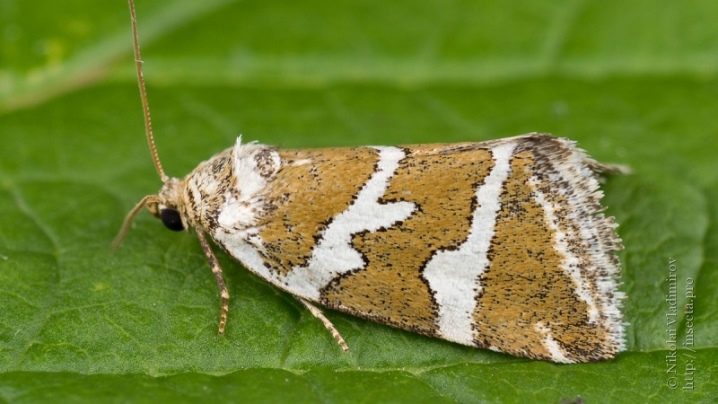
Use in landscape design
A dwarf Serbian spruce will decorate any territory, but it will also look great in a tub, on a balcony and a loggia. It can be given different shapes - in the form of a ball, a nest or an ideal hemisphere, so the use of a tree is relevant for any landscape.
The plant can be used:
- as a decorative background for garden crops such as rose, magnolia, hydrangea, peony and rhododendron;
- in an ensemble with ferns, heather;
- in combination with other evergreens, conifers and shrubs.
"Karel" is perfect for decorating rocky gardens - rockeries - and an alpine slide, it can be successfully placed in flower beds with flowers that prefer the same soil composition. On the territory of a country house, it can also be placed in a beautiful container, but in general there are many combinations of this tree with other plants - the choice of option is limited only by the owner's imagination.
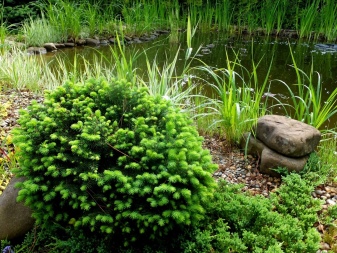
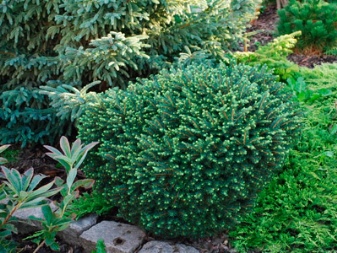
The main thing is that the soil and conditions of detention correspond to the selected group of crops.
In the next video, you will find the peculiarities of caring for the Serbian Karel spruce.



































































The comment was sent successfully.